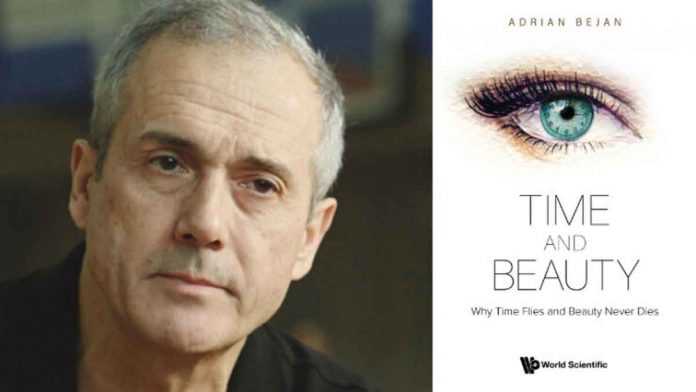Professor of Mechanical Engineering at Duke University, Adrian Bejan, has published a new book titled “Time and Beauty: Why Time Flies and Beauty Never Dies.” The book is written for a general audience that uses his concept of constructal law.
The tendency of all systems to evolve towards easier access to flow. It explains everyday phenomena that aren’t traditionally tied to physics. The book was published in February 2022 by World Scientific.
Bejan’s insights have sparked the imagination of the public involve beauty and time. Bejan posited that the golden ratio is so pleasing to people because it allows for the most efficient scan of a composition by the human eye. Bejan suggested a physical reason for why time seems to speed up as humans age. It is a slowdown in the rate at which eyes can obtain information and neural systems can process them.
Bejan explores these two concepts in more detail in his new book. It provided many visual examples to help the reader understand his explanations. Vision and cognition evolved together and are one and the same design. The increased efficiency of information flowing from the world through the eyes to the brain.
It Corresponds with the transmission of this information through the branching architecture of nerves and the brain. Bejan then delves into his thoughts as to how this basic physical infrastructure influences the way humans see the world.
Bejan argues that the world is basically oriented on the horizontal, in the realm of beauty. Danger primarily comes from the sides or from behind, for the gazelle. So, their scope of vision evolved to go side-to-side. Animals got “smarter” by seeing better, as vision developed. Bejan said that the golden ratio is the peak of this evolutionary process.
Bejan once again references the flow of information from the eyes through the branching pathways of our brains, when it comes to time. The tangled webs of nerves and neurons mature. They grow in size and complexity. They then begin to age and degrade.
Combined with a slowing of our visual systems’ abilities to quickly scan the world. These phenomena cause the rate at which new mental images are acquired and processed to decrease with age. This is evidenced by how often the eyes of infants move compared to adults. As infants process images faster than adults.
Their eyes move more often. They acquire and integrate more information while awake. As older people are viewing fewer new images in the same amount of actual time, it seems to them as though bedtime arrived too soon.

